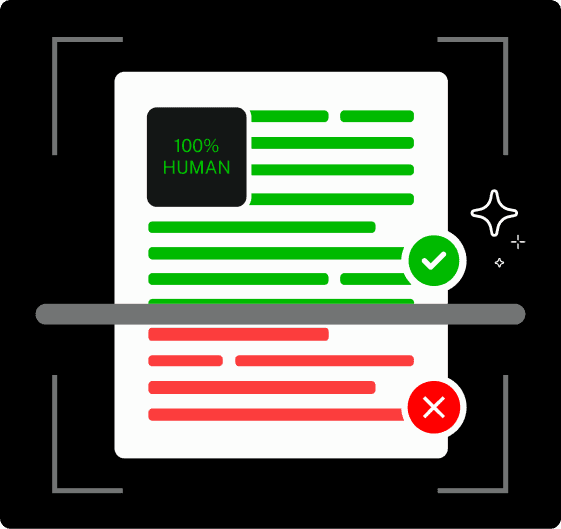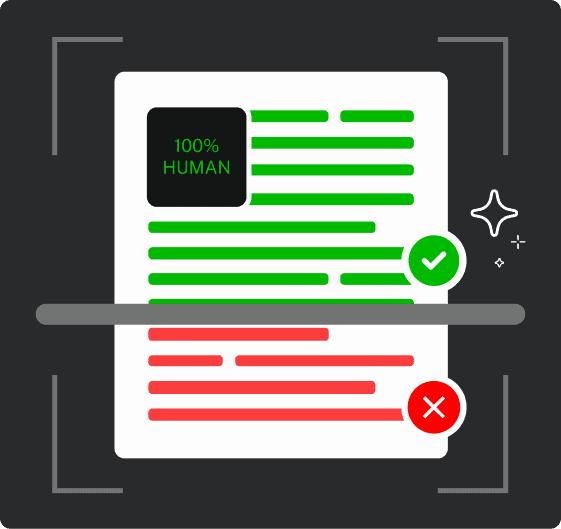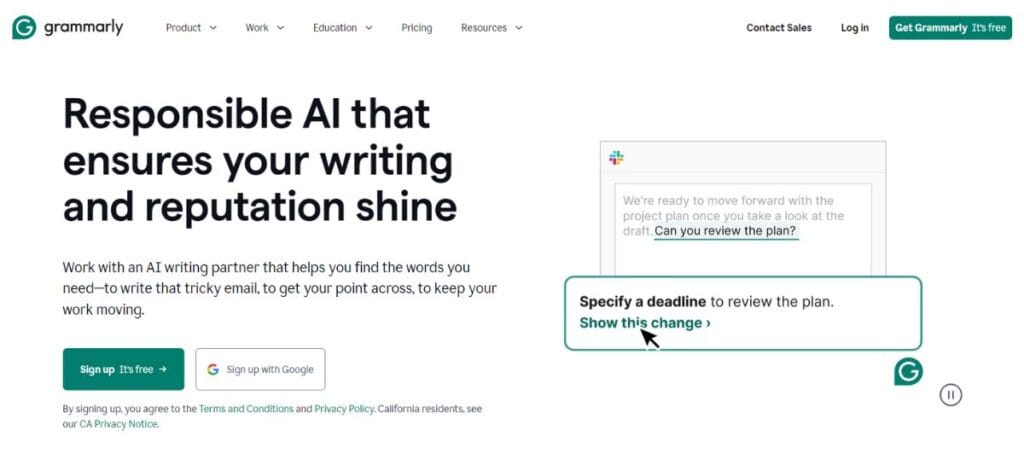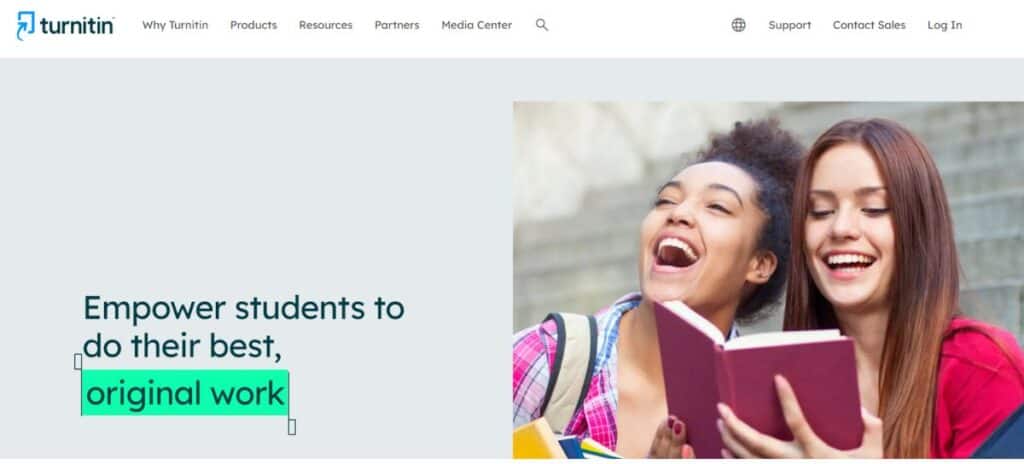Plagiarism is a serious issue in academia and beyond. It’s crucial to have reliable tools for detection.
Grammarly and Turnitin are leading plagiarism checkers used by students, educators, and professionals.
Let’s compare these two powerhouses. We’ll explore their strengths and weaknesses to help you choose the right tool for your needs.
Comparing Plagiarism Detection Capabilities
Let’s see how these top-notch platforms stand side-by-side:
Database size and scope
Turnitin boasts an impressive database. It’s got billions of web pages and academic papers.
The company has been building this collection for over two decades. They’ve partnered with numerous educational institutions worldwide.


Never Worry About AI Detecting Your Texts Again. Undetectable AI Can Help You:
- Make your AI assisted writing appear human-like.
- Bypass all major AI detection tools with just one click.
- Use AI safely and confidently in school and work.
Turnitin’s database includes current and archived internet content. It also covers many scholarly journals and publications.
Grammarly’s database is substantial, too. It covers a wide range of online content and constantly updates its sources.
Grammarly checks against web pages, academic papers, and books. However, it’s not as extensive as Turnitin’s in academic content.
Turnitin shines in academic settings. It’s got access to a vast repository of student papers.
This makes it particularly effective for catching student-to-student plagiarism.
Grammarly’s strength lies in its broader internet coverage. It’s great for checking against online sources.
Accuracy in detecting plagiarism
Both tools use advanced algorithms for many cases of plagiarism. They’re looking for exact matches and paraphrased content.
Turnitin is known for its high accuracy in academic contexts, spotting even small instances of copied text.
The tool provides detailed similarity reports that show the percentage of matched content and its sources.
Grammarly’s plagiarism checker is quite accurate, too. It’s particularly good at finding matches from online sources.
The tool highlights potentially plagiarized text and provides links to the original sources. Grammarly is also adept at detecting paraphrasing.
Turnitin excels in identifying academic plagiarism and is particularly sensitive to student-to-student copying.
Grammarly, on the other hand, is more versatile and effective for both academic and non-academic writing.
Both tools can detect and flag quoted material if it’s not properly cited.
User experience plays a role in accuracy too. Turnitin’s detailed reports can be overwhelming for some.
Grammarly’s interface is more user-friendly. It makes it easier to understand and act on results.
Neither tool is perfect and might miss some instances of plagiarism. They could also flag coincidental matches.
Human judgment is always necessary when reviewing results.
Which Tool is Right for You?
Choosing between Grammarly and Turnitin ultimately depends on your specific needs and context. Here’s a quick preview:
| Feature | Grammarly | Turnitin |
|---|---|---|
| Primary users | Writers, bloggers, general | Academic institutions |
| Database focus | Web content, general writing | Academic papers, journals |
| Integration | Browsers, word processors | Learning management systems |
| Additional features | Grammar, style suggestions | Peer review, grading tools |
| Cost structure | Free and premium versions | Institutional licensing |
| Best for | Everyday writing improvement | Academic integrity checks |
Grammarly – Best suited for writers, bloggers, and general users

Grammarly has carved out a niche as a versatile writing assistant.
It’s designed to cater to a wide range of users, from professional writers to everyday communicators.
The tool’s strength lies in its user-friendly interface and comprehensive approach to writing improvement.
One of Grammarly’s standout features is its seamless integration.
It works smoothly with various browsers and word processors, making it easy to incorporate into your existing workflow.
Whether you’re drafting an email in Gmail or writing a report in Microsoft Word, Grammarly’s there to help.
The tool goes beyond simple spell-checking. It offers in-depth grammar analysis, style suggestions, and even tone adjustments.
This comprehensive approach helps users refine their writing on multiple levels.
You’re not just correcting errors; you’re improving your overall communication skills.
Accessibility is another key advantage of Grammarly.
The company offers a free version that provides basic writing checks, allowing users to experience the benefits without financial commitment.
For those seeking more advanced features, the premium version unlocks additional capabilities.
Privacy concerns are addressed through Grammarly’s data management policies.
Users can delete their data, providing control over their information.
This feature is particularly appealing to those working with sensitive or confidential content.
Who benefits most from Grammarly?
- Freelance writers find it invaluable for maintaining consistent quality across diverse projects. It helps them meet the varying style requirements of different clients.
- Bloggers use it to enhance their content’s readability and engagement.
- Business professionals rely on it to polish their emails and reports, ensuring clear and professional communication.
- Non-native English speakers gain significant advantages from Grammarly. It serves as a language learning support tool, helping them build confidence in their writing skills. The immediate feedback on grammar and style helps accelerate language acquisition.
- General users looking to improve their everyday writing also find Grammarly helpful. From crafting better social media posts to writing more effective personal emails, the tool elevates day-to-day communication.
Turnitin – Best suited for academic institutions, students, and educators

Turnitin, on the other hand, is tailored specifically for the academic world.
Its primary focus is maintaining academic integrity through rigorous plagiarism detection.
This specialization makes it the go-to choice for educational institutions worldwide.
The heart of Turnitin’s effectiveness lies in its comprehensive database.
It doesn’t just check against web content; it also compares submissions to a vast repository of academic papers, journals, and books.
Turnitin’s reporting is another strong suit. It provides detailed similarity reports, showing the percentage of matched content and identifying the sources.
Integration with learning management systems sets Turnitin apart in the academic sphere. It works seamlessly with platforms like Canvas, Blackboard, and Moodle.
Beyond plagiarism detection, Turnitin offers additional academic tools. These include peer review features and grading tools.
Such functionality transforms Turnitin from a simple checker into a comprehensive academic support system, preventing some of the consequences of plagiarism.
Who benefits most from Turnitin?
- Universities and colleges rely on it to maintain academic standards across departments. It provides a standardized approach to plagiarism checking, ensuring consistency in academic integrity policies.
- Professors and instructors find Turnitin invaluable for streamlining their grading process. It helps them quickly identify potential instances of academic dishonesty, allowing them to focus on providing meaningful feedback.
- High school teachers use Turnitin as both a checking tool and a teaching aid. It helps educate students about proper citation and prepares them for the rigorous standards of college-level writing.
- Students, while often viewing Turnitin with trepidation, benefit from its use. It serves as a tool for self-checking before submission, helping them understand and adhere to academic integrity standards.
- Researchers and journal editors also leverage Turnitin. It helps ensure the originality of academic publications, maintaining the credibility of research in various fields.
It’s worth noting that these tools aren’t mutually exclusive. Many users, particularly in academic settings, benefit from using both.
Students might use Grammarly to improve their writing style and grammar, then run their work through Turnitin for a final plagiarism check before submission.
Educators might use Grammarly for their personal writing and communication while relying on Turnitin to grade and maintain academic standards.
Role of AI Detection and Humanizer Tools
These advancements highlight a growing concern about the balance between technological assistance and maintaining academic integrity.
Impact on Plagiarism Detection and Content Originality
With almost 80% of students saying they cheated while studying, the impact of these tools is important.
The primary objective of plagiarism detection tools like Turnitin is to uphold academic and content integrity by identifying and addressing instances of copied or unoriginal material.
Turnitin’s algorithmic prowess lies in its extensive repository, which includes academic journals, research papers, and web content.
When a document is submitted, Turnitin scans it against this database, flagging any sections that closely resemble existing work.
The impact of AI detection tools on plagiarism is profound. They have made it easier for institutions to enforce standards of originality, ensuring that students and professionals alike produce authentic work.
By providing a comprehensive analysis of text similarity, these tools not only deter potential plagiarists but also educate users about proper citation practices and the importance of originality.
Yet, the evolution of AI-generated content has introduced new challenges.
As machine learning algorithms become more advanced, AI-generated text can sometimes bypass traditional plagiarism detection methods.
AI humanizer tools add a layer of human-like expression and nuance to AI-generated content.
These tools can help ensure that the output is less likely to be flagged as plagiarized.
They achieve this by varying sentence structures, incorporating unique stylistic elements, and infusing the content with a more conversational tone.
How Does AI Humanizer Affect Plagiarism Detection?
AI humanizers play a crucial role in plagiarism detection by addressing the nuances of machine-generated text.
Unlike traditional plagiarism detection tools that primarily focus on identifying direct matches, AI humanizers are designed to make AI-generated content appear more naturally human.
AI humanizers adjust the language to reflect human-like idiosyncrasies and patterns.
They modify sentence structures, introduce varied vocabulary, and enhance the overall readability of the text.
This humanization process helps mitigate the risk of the content being flagged by plagiarism detection tools, which might otherwise recognize the text as too similar to existing sources due to its formulaic nature.
Tools like Undetectable AI contribute to content originality by reducing the likelihood of verbatim copying.
Instead of relying on static algorithms that might replicate phrases or structures from existing texts, humanizers infuse AI-generated content with a more dynamic and personalized style.
Such an approach not only improves the quality of the content but also makes it less susceptible to being flagged as plagiarized.
The interplay between AI humanizers and plagiarism detection highlights a crucial aspect of modern content creation: the balance between leveraging technological advancements and preserving authenticity.
As AI tools continue to evolve, ensuring that content remains both innovative and original becomes increasingly important.
Conclusion
In the debate between Grammarly and Turnitin, both tools offer valuable contributions to content creation and plagiarism detection.
Grammarly excels in enhancing writing quality and ensuring grammatical accuracy, while Turnitin stands out for its robust plagiarism detection capabilities.
As AI and humanizer tools continue to develop, they promise to further refine the balance between technological efficiency and human creativity, helping writers and educators navigate the complexities of modern content creation with greater precision and integrity.
